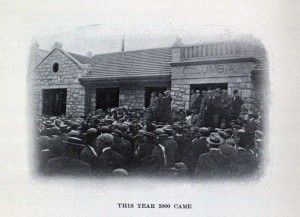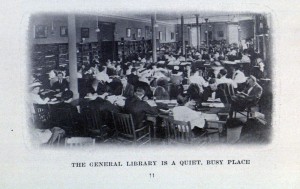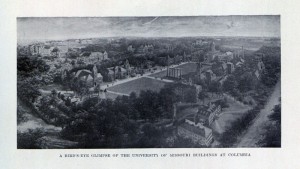Gregory the Great was consecrated to the papal office on this day in the year 590. He would have preferred to remain a monk. According to Gregory of Tours, “[h]e strove earnestly to avoid this high office for fear that a certain pride at attaining the honor might sweep him back into worldly vanities he had rejected.” Circumstances colluded to push him into public office,however, and he seems to have met with great success there. He was responsible for the conversion of the English, and is credited with the development of Gregorian chant. An eminent historian of the papacy calls him, if not the greatest pope, then the “greatest Christian” of all the popes.(1)
He was also very adept at puns, and the historical record preserves many of his zingers. When he learned that some soon-to-be-converts were from a province called Deira, he replied that this was only suitable, since they were soon to be rescued “de ira,” or “from wrath” (that is, of God). Another opportunity to exercise his skill came as he set off for the mission field with some fellow monks. When a locust landed on Gregory’s Bible he exclaimed, naturally enough, “Ecce, locusta,” (Behold, a locust). Ever attuned to alternative meanings, however, Gregory soon realized that “locusta” could be broken into “ loco sta,” meaning “stay in place.” He quickly decided to stay put and sent his cohorts on to convert the heathen alone. The drum roll, however, is generally reserved for the following. In the well-known account recorded Historia ecclesiastica, Bede tells of how Saint Gregory came upon some especially attractive slave-boys for sale in the Roman market. Gregory inquired after them and soon learned they were Angles, or members of the Germanic tribe occupying what is now England. “Not Angles, but angels,” he quipped.
 Gregory’s writings provide a synthesis of the orthodox thought of the Patristic era in the West; as such they remained very influential during the Middle Ages. This image comes from a 13th-century Italian copy of Gregory the Great’s Magna Moralia, a commentary on the Book of Job. This section comes from chapter 23 of book XIII, and comments on Job: 16:19-20, verses that the scribe underlined in red. (The scribe indicates the start of a scriptural verse drawn from outside of the Book of Job with green pigment.)
Gregory’s writings provide a synthesis of the orthodox thought of the Patristic era in the West; as such they remained very influential during the Middle Ages. This image comes from a 13th-century Italian copy of Gregory the Great’s Magna Moralia, a commentary on the Book of Job. This section comes from chapter 23 of book XIII, and comments on Job: 16:19-20, verses that the scribe underlined in red. (The scribe indicates the start of a scriptural verse drawn from outside of the Book of Job with green pigment.)
You can see the end of verse 19–“O earth, do not cover my blood; let my outcry find no resting-place”-at the top of the folio. In the commentary that follows, Gregory first equates the blood in question with Christ’s blood. More surprisingly, he also equates the outcry with the blood, bringing in support from Genesis (And the Lord said, “What have you done? Listen; your brother’s blood is crying out to me from the ground!”) Gregory finds further application to human conduct: “We are bound to imitate that which we take,” i.e. the sacrament of wine representing the blood of Christ. “But that His cry may not lie hid in us, it remains that each one of us according to his small measure should make known to his neighbors the mystery of his own quickening.”(2)
Verse 20–“Even now, in fact, my witness is in heaven,and he that vouches for me is on high” is about two-thirds of the way down. A three-line blue initial begins the commentary for this verse. Gregory interprets the “witness” to be God the Father. The verse thus contributes an orthodox understanding of the divine nature of Christ. The Christological debates of the Early Middle Ages, in which the dual nature of Christ was often contested, probably underlie this understanding.
Fragment 75, and others of Gregory’s manuscripts are available to be consulted during our regular opening hours.
1. Erich Caspar, Geschichte des Papsttums, vol. II, p. 514
2. Translations from the Latin taken from the translation by John Henry Parker, et al.












